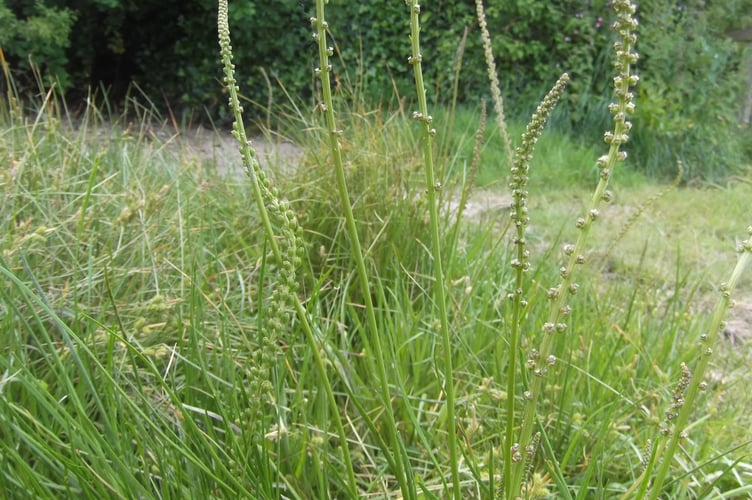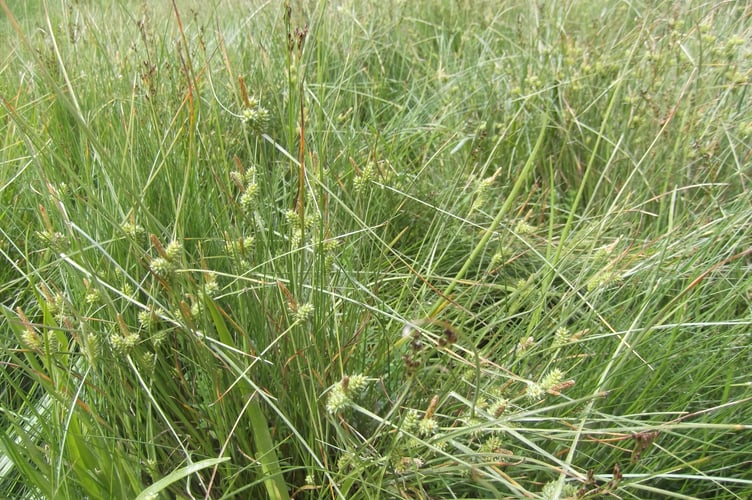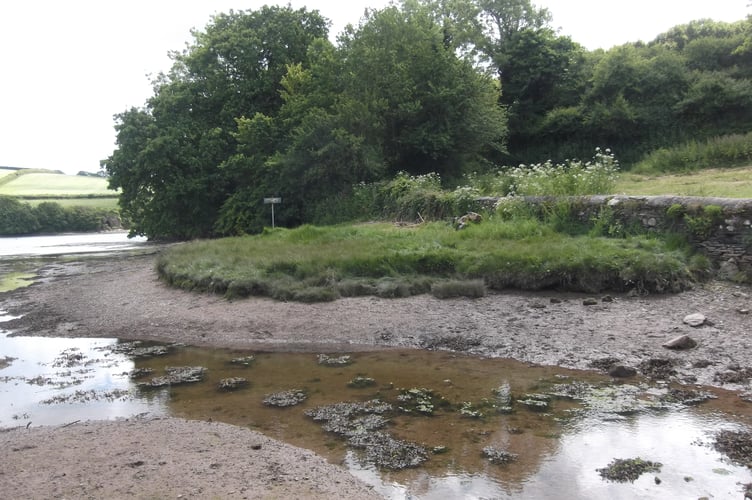Twenty-five years ago, Nigel Mortimer and I surveyed the extent of some of the Kingsbridge Estuary’s salt marshes, recording which species grew where.
Last week I started to revisit those sites, a silver jubilee visit. I had a few surprises. My first stop was Frogmore. I took the path down to the estuary shore from the main road, just uphill from the Globe Inn; a good refreshment stop for later. We had surveyed the stretch from where the path emerged onto the foreshore to the head of the creek about a hundred metres upstream.
Barbara and I used to keep our little boat on the foreshore there. Twenty-five years ago there was a promontory of saltmarsh about 12 metres long and 1 metre wide and an island, 4 metres by 3 metres, just off the tip of it, stretching just below where a few boats are still left on the foreshore. If a patch of saltmarsh looks like a mowed lawn, it is made of a special grass called, unsurprisingly, saltmarsh grass. This promontory and island, and four other islands, each 1 or 2 metres long and 1 metre wide dotted along the foreshore, were mostly saltmarsh grass, with some sea aster, sea arrow-grass, sea spurrey and clumps of saltmarsh sedge.
The first surprise was that all those fragments of saltmarsh had gone; all washed away by the flowing tides and perhaps aggravated by we boat owners pushing our boats up and down the shore,
I walked a hundred metres or so downstream to where the fine, double lime kiln stands, In 1999 there was saltmarsh stretching from the slipway, about 20 metres from the lime kiln, across the frontage of the kiln, which is about 16 metres long, and upstream for another 16 metres. The vegetation nearest the shore was a band of sea club-rush and closer to the mud was a mixture of saltmarsh rush, sea spurrey, saltmarsh sedge and a little saltmarsh grass at the edge. My photo shows surprise number two. There had been a dramatic change. A two-metre high reed-bed had replaced all the salt marsh between the slipway and the eastern edge of the kiln – a total of about 36 metres. Fiona Van Es’ fascinating information board about the kiln shows the reeds, with a reed bunting perched in them. The saltmarsh to the right of the kiln continued for about 12 metres upstream much as it did twenty-five years ago, but rather narrower. Perhaps freshwater streams emerging from the opening of the kiln and along the foreshore provided the perfect habitat for a stray reed seed to germinate and for the spreading roots to invade the salt marsh – it moves fast. We may see it spreading further upstream in the future.
I finished by going to Cleavehouse Bay. You can get to Cleavehouse Bay by either following the footpath from Frogmore village that runs in the field above the foreshore or by the footpath down the valley from East Charleton, past the ruined barn. This is the valley where Barrie Whitehall studied the lives of the dozen or so chiffchaffs that nested there; he grew to know them all and recognised some of them from previous years.
My mission was to find out if the saltmarsh that fringed the bay had changed. I had a beautiful place to spend the afternoon. The neap tide was nearly full. Shoals of fish-fry were basking in the shallow water and a little egret was high-stepping along in the shallow water, snapping up some of the tiny fish for his lunch. I sat by the footpath, quietly watching the scene, as I ate my packed lunch.
Afterwards, I carefully measured the length and width of the two areas of salt marsh, either side of the stream’s inflow and took photos. The one was about 25 metres long and about 9 metres wide, almost exactly what it had been in 1999. The other was 22 metres long and about 3 metres wide, compared to 37 metres long and 5 metres wide in 1999; it looked as if the reduction had been caused by the branches of the trees and shrubs along that section of the bay spreading out over the saltmarsh and shading out the vegetation. So there were no great surprises but a good variety of saltmarsh plants to try to photograph: the pale pink star flowers of sea spurrey, the spiky architecture of the clumps of saltmarsh sedge, the delicate wands of sea arrow-grass and the tiny leaves and pink, cupped flowers of sea milkwort.
To end a surprising and beautiful day, as I headed back I heard the song of the chiffchaff, like chinking coins.
Caption: Photos show sea spurrey, salt marsh sedge, sea arrow-grass and sea milkwort.









